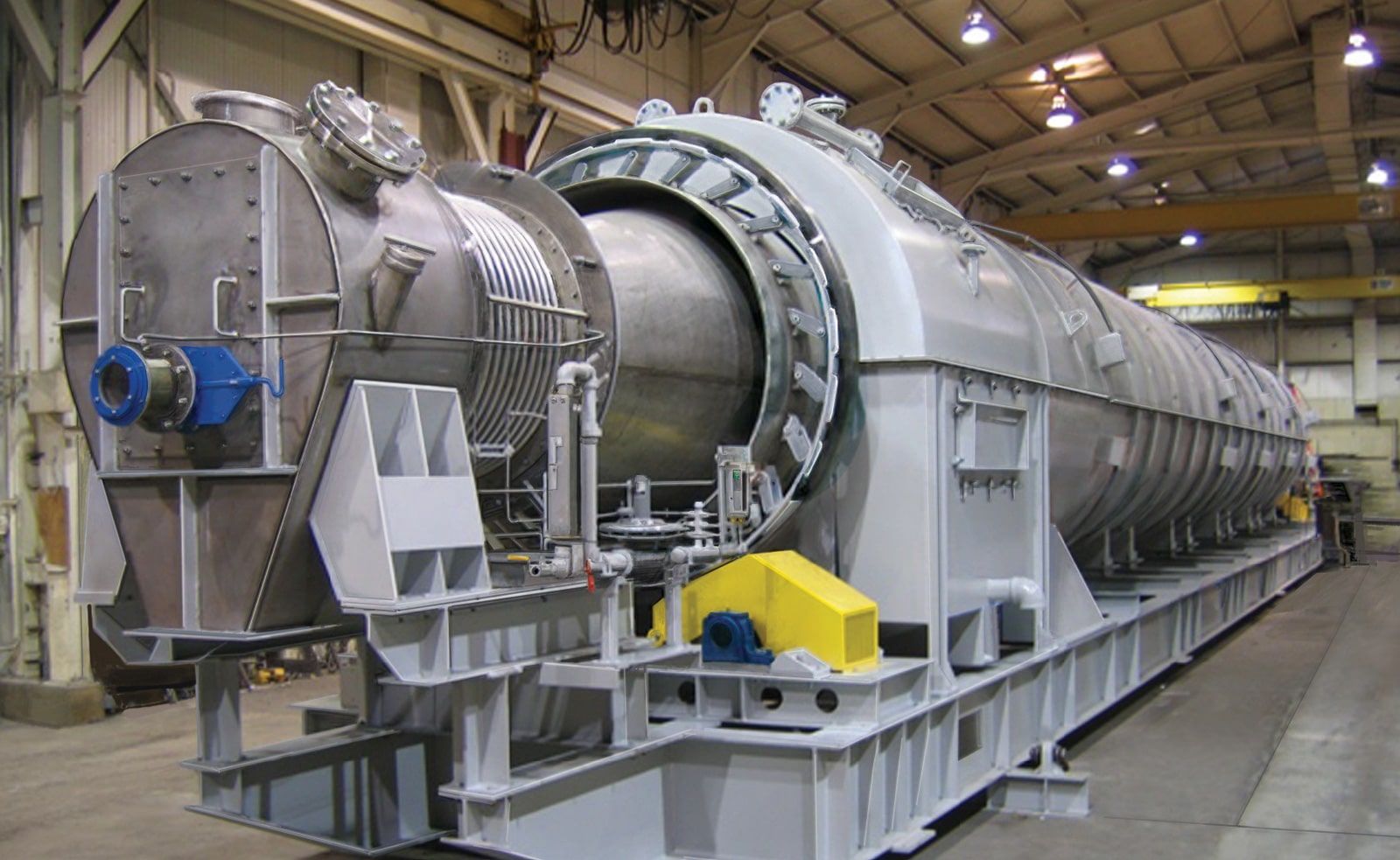
Posted on September 6th, 2024 by hpprocess
Dryers are pivotal in numerous industries, ensuring the efficient processing of materials across a broad spectrum. Implementing a robust preventive maintenance routine enhances productivity and extends the lifespan of these essential machines. This comprehensive guide will delve into the types of dryers utilized in industrial settings, outline specific maintenance tasks, and underscore the significance of detailed recordkeeping.
Types of Dryers
Dryers are integral to industrial operations, each designed to meet specific requirements of materials and processes. Here’s a quick rundown:
- Rotary Dryers & Coolers: These dryers are versatile, handling a broad range of materials with customizable sizes and settings.
- Fluid Bed Dryers & Coolers: Ideal for free-flowing materials, fluid bed dryers offer high heat transfer rates and gentle handling.
- Flash Dryers: These efficient dryers remove moisture from heat-sensitive materials without causing thermal degradation.
Understanding these dryer types helps select the right equipment for specific industrial needs, enhancing efficiency and product quality.
Daily Maintenance Tasks
Daily maintenance tasks form the backbone of preventive strategies to prolong dryer life spans while reducing unplanned downtime.
Visual Inspections
- Conduct regular checks to identify any signs of wear, damage, or leaks.
- Ensure all safety guards and protective covers are securely in place.
Cleanliness
- Maintain cleanliness around the dryer area to prevent dust and debris accumulation.
- Regularly check and clean air vents and filters to ensure they are free from blockages.
Operational Checks
- Monitor critical parameters such as dryer temperature and airflow.
- Listen for unusual sounds that could indicate mechanical problems.
- Confirm that control systems and sensors are operational.
Lubrication
- Adhere to manufacturer guidelines for lubricating moving parts.
- Inspect for signs of excess lubricant or leaks, which could indicate sealing issues.
Documentation
- Update the operations log with all relevant data from daily checks.
- Note any irregularities or potential issues for further investigation.
Periodic Maintenance Tasks (Weekly/Monthly)
Periodic tasks are essential for addressing wear and tear that may not be immediately apparent during daily checks but can lead to significant issues if left unaddressed.
Detailed Inspections
- Thoroughly examine all dryer components, such as belts, chains, rollers, and bearings.
- Look for wear, corrosion, or alignment issues that need adjustment or replacement.
Cleaning and Maintenance
- Deep clean internal components like ducts, fans, and heat exchangers to maintain efficiency.
- Replace or cleanse filters and screens regularly to sustain optimal airflow.
Calibration
- Regular calibration of control systems, sensors, and instruments ensures accuracy in operations.
Minor Repairs and Adjustments
- Make necessary adjustments, such as tightening bolts or adjusting belt tension.
- Promptly replace worn or damaged parts to avoid further damage or inefficiency.
Safety Checks
- Test all safety devices and emergency shutdown procedures to ensure they function correctly when needed.
Annual Maintenance Tasks
Annual maintenance is crucial for a thorough examination and overhaul to address any accumulated issues from the year’s operation, ensuring the dryer’s reliability for another cycle of heavy use.
Comprehensive Inspections
- Undertake an extensive review of the entire system, including structural components like insulation and electrical setups.
- Evaluate the condition of critical elements, such as drums, flights, burners, etc., for signs of significant wear.
Major Cleaning and Overhaul
- Perform an in-depth cleaning of all components. This might include disassembling parts like heat exchangers for thorough servicing.
- Inspect each component after cleaning for signs of damage or wear that could impact functionality.
Component Replacement
- Replace components showing significant wear or nearing the end of their expected lifespan to prevent failures.
- Consider upgrading older parts with newer, more efficient options if available.
System Upgrades and Improvements
- Implement upgrades or modifications recommended by manufacturers or as dictated by technological advancements in drying technology.
Documentation and Planning
- Update maintenance records with comprehensive details from inspections, repairs, replacements, or upgrades throughout the year.
You ensure minimal downtime by adhering strictly to these detailed maintenance schedules—daily, periodic, and annually. This proactive approach extends the lifespan of your dryers and enhances their efficiency and reliability in your production processes.
Recordkeeping for Effective Maintenance
Accurate and comprehensive recordkeeping is essential for effective maintenance of industrial dryers. Here is an overview of the key elements:
- Legal Documentation: Up-to-date permits, licenses, and inspection reports ensure compliance and are crucial for audits.
- Operations and Maintenance Manuals: Provide operation and care guidelines crucial for training and emergency procedures.
- Drawings: Offer visual setups of dryers, which are invaluable for troubleshooting and complex tasks.
- Parts Lists: Detailed part specifications improve efficiency in ordering and upgrades.
- Daily Maintenance Procedures: Routine checks help spot early wear or malfunctions to prevent more significant issues.
- Special and Emergency Maintenance Procedures: Defined steps for emergencies enhance safety and reduce downtime.
- Safety Procedures: Protocols that protect staff during routine and complex maintenance tasks.
- Baseline Operation Record: Records normal operational parameters to detect deviations early.
- Operations Log: Tracks performance trends hourly, offering insights into potential improvements.
- Maintenance Log: Logs all maintenance activities, assisting future decision-making on equipment management.
- Lubrication Record: Scheduled lubrication ensures smooth operation of components, maintaining consistency.
- Annual Turnaround Procedure: Documents steps for major overhauls during scheduled downtimes.
Proper documentation facilitates maintenance and enhances operational efficiency and safety. For a deeper insight into effective recordkeeping practices for dryer maintenance, learn more here.
Enhancing Operational Efficiency Through Preventive Maintenance
Implementing a detailed and disciplined approach to preventive dryer maintenance ensures operational excellence, safety, and profitability. By adhering to the daily, periodic, and annual maintenance tasks outlined in this guide, you can significantly extend the life of your dryers, enhance their performance, and reduce unexpected downtimes that could impact your bottom line.
For further assistance or to discuss your dryer maintenance needs, please contact us. Our team of experts is ready to help you optimize the efficiency and longevity of your drying systems.










